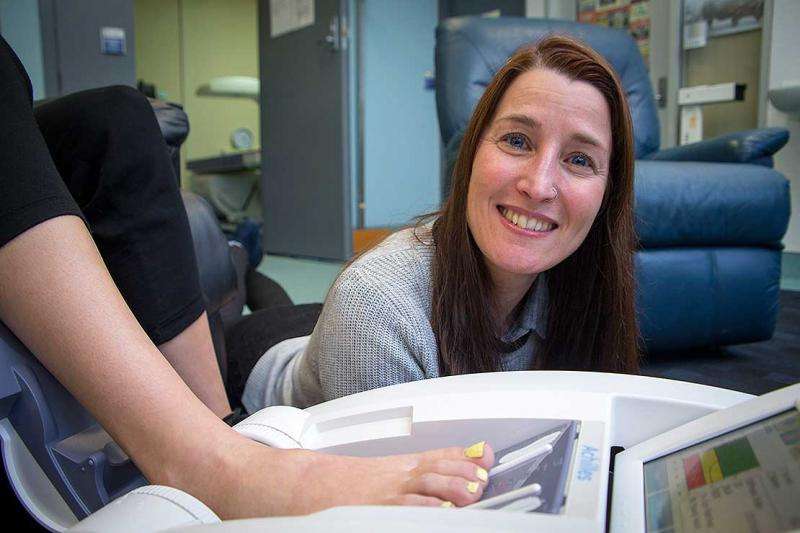Love your bones

Osteoporosis is one of the leading healthcare issues worldwide. Characterised by reduced bone tissue and changes in bone structure, osteoporosis increases fragility and risk of fractures in older adults. It is estimated about 22 per cent of women over 50 years of age will develop osteoporosis. So what can you do to reduce the risk of osteoporosis in your younger years?
Dr Jasmine Thomson, a lecturer in human nutrition from the Massey Institute of Food Science and Technology, says peak bone mass occurs during young adulthood. "Developing some lifestyle habits that help increase peak bone mass when women are 18-25 years old is an important strategy to reduce their risk of osteoporosis later in life," she says.
Now Dr Thomson and other University researchers are investigating osteoporosis knowledge, beliefs and behaviour in young women.
The "Love Them Bones" study is led by Dr Thomson, with Dr Louise Brough, Dr Janet Weber, Professor Jane Coad, Professor Marlena Kruger and international expert Dr Mary-Jane De Souza, Director of the Women's Health and Exercise Lab from Pennsylvania State University.
"We want to investigate a strategy that appeals to young women and might educate and engage them in making some changes to their lifestyle while they are young, to reduce their risk of getting osteoporosis when they are older," Dr Thomson says.
Participants will answer questions about their lifestyle, diet, and physical activity, and how much they already know about osteoporosis.
"We have a machine that measures your bone quality by ultrasound. The Quantitative Ultrasound machine transmits and receives sound waves; the intensity and speed of these sound waves are altered by the properties of your bones. You just put your foot into the machine and it gives your foot a warm hug. It produces results pretty much immediately and you can keep your results after the test," Dr Thomson says.
Study participants will also undergo a finger prick collection of a few drops of blood to test for anaemia. They will get an individual dietary assessment, anaemia testing and ultrasound results after the study.
Dr Thomson says some participants will be invited back to have a DEXA bone scan and body composition test. "The DEXA is a measure of bone density. It uses very low dose radiation X-rays to measure the bone density of your hip and spine, and also measures your body composition, so your fat mass, lean mass, and bone mass of your body," she says.














